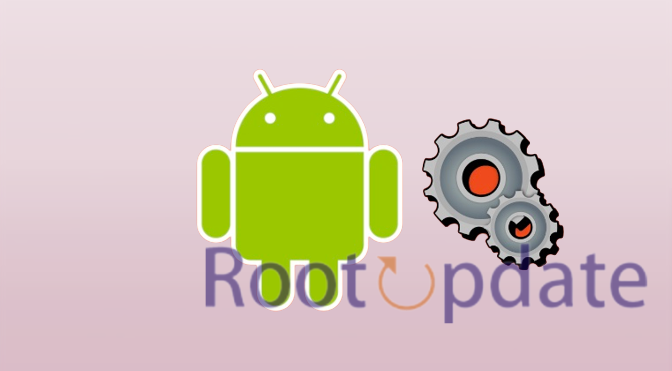Manually Install Kernel Sh In The Service.D Path: Are you looking to take control of your system’s kernel and enhance its performance? If so, then you’ve come to the right place! In this blog post, we will explore the process of manually installing Kernel Sh in the service.d path. By following these steps, you can gain greater flexibility and customization options for your operating system. So let’s dive in and discover how to unlock the full potential of your kernel!
For any tech enthusiast, customized kernels stand out as the ultimate tool. These kernels are incredibly versatile, striking the ideal balance between performance, user experience, and battery life. They are flexible enough to adjust Task scheduler for better UI agility as well as IO scheduling latencies.
There are two main ways to install them: manually installing the Kernel Sh in the service.d path or using the Kernel Flasher software. The manual method requires a little bit more expertise, even though the app provides a simpler experience with only a few taps.
You shouldn’t worry, though. You will be guided through each step in this article, resulting in a smooth installation procedure.
What is the need to Manually Install Kernel Sh In The Service.D Path?
Table of Contents



Manually installing the Kernel.sh file in the service.d path is necessary for several reasons:
1. Customization: Installing a custom kernel allows users to customize their Android or Windows operating system according to their specific needs and preferences. By manually installing the Kernel.sh file, users can take advantage of additional features, optimizations, and performance enhancements that may not be available in the stock kernel.
2. Performance Optimization: Custom kernels often include optimizations that can significantly improve the performance of the device. These optimizations may include better power management, improved CPU scheduling algorithms, and enhanced memory management. By installing the Kernel.sh file, users can potentially experience a smoother and faster operation of their device.
3. Compatibility: Some custom ROMs or third-party modifications may require a specific kernel version to function properly. By manually installing the Kernel.sh file, users can ensure that their device is compatible with the desired custom ROM or modification.
4. Bug Fixes and Security Patches: Custom kernels are often developed by a community of developers who actively work on fixing bugs and vulnerabilities in the kernel code. By manually installing the Kernel.sh file, users can benefit from these bug fixes and security patches, which may not be available in the stock kernel.
5. Experimental Features: Custom kernels sometimes introduce experimental features or functionalities that are not yet integrated into the official releases. By manually installing the Kernel.sh file, users can access and test these experimental features, providing valuable feedback to the development community.
It’s important to note that manually installing a custom kernel requires technical knowledge and carries certain risks. Improper installation or compatibility issues can lead to device instability, data loss, or even bricking the device. Therefore, it is recommended to thoroughly research and follow proper installation instructions provided by reliable sources before proceeding with manual installation.
Pre-Requisites before you Manually Install Kernel Sh In The Service.D Path
- Rooting the Device: To begin, use Magisk to root your device. Consider this establishing the groundwork. The following procedures would be pointless without root access.
- Installing File Manager: Next, download and install a root-compatible File Manager application. This will make it easier to access your device’s file system, which is required for the next steps.
Download Kernel
- How to Choose Your Kernel: This is where your own tastes come into play. You’ll need to download and unzip the modified kernel that fits your needs.
- Kernel File Transference: You’ll find one or more.sh files in the files you’ve downloaded. These files need to be moved to the place /data/adb/service.d.
How To Manually Install Kernel Sh In The Service.D Path



Setting the file access right is the most important part of the process. Making sure these rights are set up correctly ensures that your kernel will run at its best.
When prompted for permissions set at 755:
- Owner: Read, Write, and Execute (RWX)
- Group: Read and Execute (RX)
- Global: Read and Execute (RX)
Voilà! Your personalized Kernel Sh should now be manually installed in the service.d directory. Manual installations frequently result in a better grasp of the process, allowing for more accurate adaptations in the future.
If you have any questions or encounter any problems during the process, please leave them in the comments section. We’re here to help and make sure your kernel installation goes as easily as possible.
Conclusion
Manually installing the kernel sh in the service.d path is a crucial step for optimizing your system and ensuring smooth operation. By following the steps outlined in this article, you can seamlessly integrate the kernel sh into your service.d directory.
Remember, manually installing the kernel sh allows you to have more control over your system’s startup process and ensures that important scripts are executed efficiently. This can ultimately lead to improved performance and stability.
So why wait? Take charge of your system today by manually installing the kernel sh in the service.d path. With a little bit of effort, you’ll be able to optimize your system and enjoy a hassle-free computing experience.
If you found this article helpful or have any questions or suggestions, please feel free to leave them in the comments section below. Happy manual installation!
